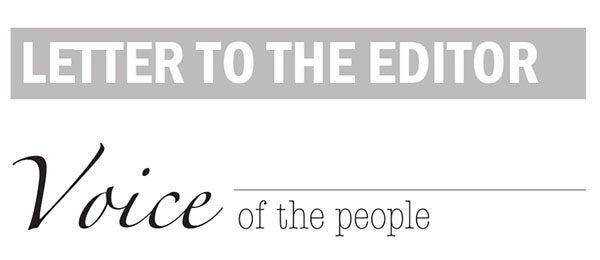Why is it so hard for white people to talk about race?
Published 7:08 pm Tuesday, May 7, 2019
By ERIC MOUNT
Contributing columnist
“He’s not a racist. He is a really nice guy.”
“I don’t see color. I can’t be racist.”
“I work in a diverse environment. How could I be racist?”
Robin Diangelo tells us in her New York Times best seller, “White Fragility: Why It’s So Hard for White People to Talk about Racism.”
A former professor of sociology and multicultural education, Diangelo, who herself is white, has spent more than 20 years as a consultant and trainer with corporations, schools and other organizations on issues of racial and social justice. When it comes to white defensiveness or fragility about racism, she has seen it all. Frank conversations about racism are hard on our good opinions of ourselves, and we can bristle at the implications. Racial bias is largely unconscious, and we don’t welcome having it called to our attention. She concludes from her experience, “The only way to give feedback without triggering white fragility is not to give it at all.”
The degree of difficulty roots in the dominant world view of white society. “The dominant paradigm of racism as discrete, individual, intentional, malicious acts makes it unlikely that whites will acknowledge any of our actions as racism.” Her focus instead is “the inevitable racist assumptions and patterns displayed by white people conditioned by living in a white supremacist culture.”
More than individual acts, she wants to make visible “a system of unequal institutional power” that is buried in our culture. From birth we are socialized into racial superiority and privilege, not because our parents are bent on perpetuating racism. Instead, white racism is inevitable because the impact of a history of genocide, slavery and colonization continues to affect us despite our better intentions. White dominance and privilege do not give way easily.
The author acknowledges that she was a fully adult parent and college graduate before she fathomed the power of this socialization to regard whiteness as the norm for humanness and racial identity is what only non-whites have. “Our institutions,” she writes, “are designed to reproduce racial inequity and they do so with efficiency.” Schools are particularly effective at this, she believes, but the criminal justice system, our entertainment industry, and indeed all of our institutions are part of the problem.
One of our defenses against acknowledging the reality of institutional or cultural or systemic racism is to adopt a colorblind stance and consider ourselves post-racial. According to Diangelo, this stance may be well-intentioned at the outset, but it ends up protecting our racial bias while maintaining our identities as open-minded people. The more we object to blatant racism morally, the more we resist acknowledging our complicity in its subtler forms.
We may claim not to see color, but we can’t be colorblind in a racist society. To say we do not see the race of the person standing before us, who has had a very different experience from us because of race, is not to see the other person at all. We see our white identity not as identity politics but as an objective point of view. We may label the identity politics of non-whites as racism in reverse without acknowledging that civil rights gains would not have occurred without some form of identity politics. Indeed, she argues that all politics have rested on identities.
Diangelo cites a survey showing that 55 percent of white people believe that white people are being discriminated against, especially by the government. Far fewer actually claim to have experienced discrimination themselves, but any advancement of racial minorities often brings protest against reversals of the good old days when white privilege went largely unchallenged.
“White Fragility” thoroughly catalogues the feelings, forms and repetitive practices of institutional racism. It also thoroughly identifies and illustrates both the negative and the positive responses Diangelo has encountered in her efforts to make racist assumptions and patterns visible. The author has found over and over that people don’t want diversity training to be uncomfortable. They really don’t want to have their assumptions and their good opinion of themselves challenged. They are quick to feel attacked and to make themselves the victims instead of those who are the casualties of racism. They are inclined to punish rather than thank someone who attempts constructive feedback.
The author’s manner comes across as respectful, but she cannot approve the desire of many white people to make being nice all that anti-racism requires. “Authentic anti-racism is rarely comfortable,” she believes.
She assures her readers that the challenge to racism is never finished “because,” she writes, “I will never be completely free of racism or finished with my learning.” She had already warned us, “I know that I have blind spots and unconscious investments in racism.”
Accepting her challenge is not for the faint-hearted nor, should I say, the fragile of mind and heart, but for any who sense the magnitude of racism’s effects on our avowed desire for community and its culpability for our divisions as Americans, it is a challenge to which we need to rise. Our self-liberation as whites is at stake as well as the liberation of victims of racism.





